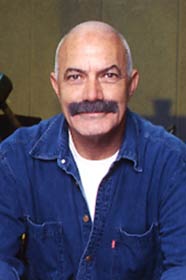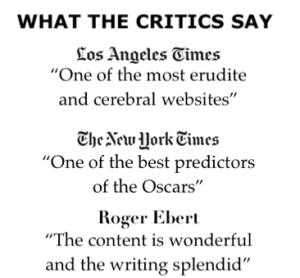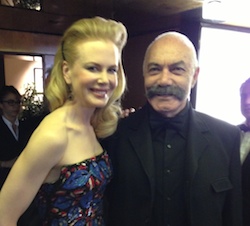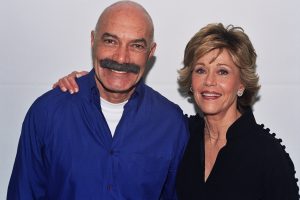




The alienation of youth finds a rigorously poetic voice in Terrence Malick's “Badlands,” a movie that announced the arrival of a visionary director who would continue to impress in his next film, “Days of Heaven.” From the crystalline beauty of the prairie landscapes to Sissy Spacek's affectless narration to the offhand way in which Martin Sheen's Kit goes on a murder spree, “Badlands” gives an ethereal grace to the rage and despair of the young, reflecting the zeitgeist in the post-Vietnam and Watergate era.
“Badlands” bears some thematic similarity to “Bonnie and Clyde,” “Sugarland Express,” and “Jeremiah Johnson,” though its narrative approach and stylistic strategy are vastly different. Loosely based on the real-life killers Charles Starkweather and Carol Fugate, it is a fictionalized account of the rootlessness of two youngsters, Kit Carruthers (Martin Sheen), a 25-year-old garbage collector, and Holly Sargis (Sissy Spacek), a 15-year-old girl. Like Bonnie and Clyde, the movie could be perceived as a ballad, or folk tale. However, unlike Bonnie and Clyde, Badlands lacks overt romanticism and doesn't mythologize its protagonists.
Similarly to Jeremiah Johnson, most of the narrative is set far from civilization, in the wide plains of North Dakota and Montana. And like Spielberg's Sugarland Express, at its center is a fugitive couple defying society's norms. Compared with all three movies, Badlands is the most formal and self-conscious endeavor.
Maintaining ambiguity, the film does not take a definite moralistic approach toward its characters, or the society in which they live. And unlike Bogdanovich's Paper Moon, which was released in the same year, Badland discourages the audience from exhibiting sympathy for the characters. The viewers are distanced by a set of protagonists who themselves avoid expressing feelings. Badlands is framed by Holly's emotionless voice-over narration, and its aesthetic strategy is reflected in stylized and formal tableaux.
Set in l960, Badlands represents a chilling expose of alienation as a state of self-estrangement and aimlessness. Holly's mother has died when she was young, and she now lives with her working-class father. Kit has no family, friends, or any meaningful bond. He is engaged in one of the most meaningless and humiliating jobs possible: Garbage collection.
Spotting the bored Holly, a child-like woman, with her long beautiful hair and sexy shorts, Kit falls for her. Their courtship is depicted through walks along the tree-sided streets and by the river. A gentleman, Kit does not immediately demand to consummate their relationship. However, once they have sex (in the woods), both look disappointed. Kit walks away, and Holly is bewildered and disenchanted, since her knowledge of sexual matters is totally drawn from confessional magazines. “Did it go the way it's supposed to” she asks Kit, “Is that all there is to it” And with a sigh of relief, she notes, “I'm glad it's over.” It's the only time we see them engage in sex.
They think they are in love, but their relationship fails to show it. In fact, Holly says early on that Kit is in the wrong line of work and from the wrong side of the tracks, and she wonders what her husband would be like. Both Kit and Holly seem incapable of showing emotions toward each other, or other people for that matter. In his murder spree, it is not clear if Kit holds onto Holly because he loves her, or because he needs a witness, an audience to appreciate and to applaud his heroic act. Kit tells Holly he doesn't want to die without a girl shrieking for him.
Holly's domineering father forbids her to see Kit and, upon finding she has deceived him, he shoots her dog in cold blood. As further punishment, he forces her to take more music lessons in clarinet. A brute, he tells Kit bluntly that he is not good enough for his daughter. As a result, Kit kills Holly's father in front of her, buries his body in the basement, and then sets the whole house on fire. The blaze is shown in a stunning montage, with the camera lingering on every object burnt, while the soundtrack plays Satie. The horror of the deed is deflated and diffused by the aesthetic style, as if director were saying there is beauty in the most horrendous act.
On the run, the couple lives in Nature on minimal subsistence. They start new lives with new names: Chance and Priscilla. Wearing a jeans suit and white T-shirt, Kit bears strong resemblance to James Dean, of which he is aware, since everybody in the film tells him so. A modern version of Hemingway's White Hunter or Jeremiah Johnson, Kit lives outdoors, in a tree house, instructing Holly how to shoot, cut wood, and fish, in short how to live in the wilderness. Like Jeremiah Johnson, Kit's goal is to be a mountaineer in Canada. “We have become sensitive to the rhythms of the logs,” says Holly in her voice-over narration.
With few characters, most of the narrative juxtaposes the couple against the big skies and vast, barren lands of the Great Plains. It is not, however, an idyllic life. Kit lacks an appreciation of the beautiful vistas around them. Reflecting the Cold War mentality, he tells Holly that if the Commies would drop the atomic bomb they might as well start in Rapid City.
After weeks of complete isolation, their “first taste of civilization,” as Holly says, is the sight of a train. Gradually, Holly loses interest in Kit and in their life together. She tells Kit she feels “like an animal.” She surrenders to the authorities, and after several posses and chases, he is in captivity too. Arrested in Montana, the police officer is disappointed to realize that Kit is no bigger than he is
The policemen are amiable, not as vicious or mean as their counterparts in Bonnie and Clyde. Kit, in fact, shares secrets and jokes with his captors. Asked by a cop if he likes people, all Kit can say is, “I guess they're O.K.” Still perplexed, the cop persists, “Why did you do it” “I don't know,” says Kit, “I always wanted to be a criminal, I guess, just not this big one.” The law officers are indifferent: Smiling at his answers, they show neither indignation nor anger.
A similar depiction of alienation and aimlessness prevails in Tim Hunter's River's Edge, wherein a high school youngster kills for no apparent reason. In both films, moral emptiness is viewed as an inevitable by-product of mass society and its vulgar culture.
The dysfunctional role of the media is depicted in similar manner to that in Bonnie and Clyde and Sugarland Express. The media's thirst for sensationalism confers status on petit criminals, turning them into instant celebrities, and through their stories, they turn Kit into a bigger-than-life figure. As in Sugarland Express, the town's people in Badlands are eager to get any story or souvenir from Kit, be it his watch, pen, or a candy.
Full of contradictions, Kit is not counter-cultural in the mold of the protagonists in Easy Rider. Kit does not defy institutional authority per se. For example, he likes orderliness and dislikes litter; he shoots a football because it is “excess baggage.” Kit also shows respect for Holly's education, insisting that she takes her books with her so that she won't “fall behind.”
Holly is an innocent victim, a girl satiated by stories fleshed out by film magazines and dime novels. At the end, Holly rehabilitates, marries a lawyer, and settles down to middle-class domesticity. Kit, however, is carried in a helicopter to his execution, but fails to register any emotion; life and death seem equally meaningless for him.










